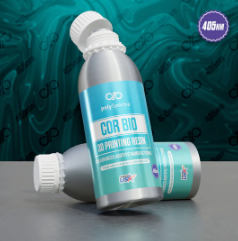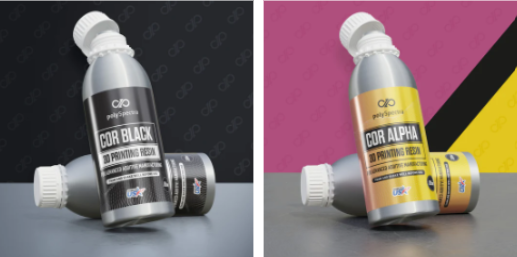3D printing materials producer polySpectra has announced its latest Cyclic Olefin Resin, COR Bio at RAPID + TCT 2023.
COR Bio boasts a novel combination of toughness, biocompatibility, and autoclavability, making it a suitable choice for creating end-use medical devices. According to the manufacturer, this novel material marks polySpectra’s entry into new markets. With its superior properties, COR Bio is “set to improve” the 3D printing industry, opening up new possibilities for healthcare and consumer product manufacturing.
“We are tremendously excited to bring this powerful technology to the general public, which we hope will accelerate innovation in these critical industries,” said polySpectra.

COR Bio: A versatile resin with multiple industrial applications
COR Bio is a type of resin that offers a variety of industrial opportunities beyond the flagship COR Alpha and COR Black resins. This material unlocks potential applications in several key areas, particularly in the production of end-use parts. These areas include healthcare, where COR Bio can be used to manufacture medical device components, dental products, surgical tools, and orthotics. Additionally, the resin can be applied to consumer products and podiatry applications. polySpectra believes the use of COR Bio also extends to the production of milli- and micro-fluidic devices, making it a versatile material with multiple industrial applications.
COR Bio exhibits variable rigidity depending on its thickness. polySpectra says, this material displays superior ductility, boasting an elongation at break of 100%, which makes it “one of the most durable” photopolymers available in the market. COR Bio offers a combination of properties, including the toughness and durability typically seen in medical-grade thermoplastics, as well as the high-impact strength found in engineering thermosets.
Cyclic Olefin Resins, such as COR Bio, exhibit minimal volumetric shrinkage, providing engineers with a “high level of confidence” when 3D printing precise parts. The combination of a high working temperature and low moisture absorption in this material provides notable resistance to steam autoclave sterilization, making it a suitable choice for a range of medical device applications. The development of the chemistry behind COR Bio spanned several years and received valuable input from Fortune 100 clients in the healthcare, medical device, and biotechnology industries.
Potential customers can request printed COR Bio parts with instant quotes available here.

Mechanical properties of COR Bio
| Mechanical properties | Metric | U.S. | Method |
| Tensile Modulus | 2.2 GPa | 319 ksi | ASTM D638 |
| Ultimate Tensile Strength | 63 MPa | 9.1 ksi | ASTM D638 |
| Tensile Toughness | >35 MPa | > 5 ksi | ASTM D638 |
| Elongation at Break | 100±20% | ASTM D638 | |
| Flexural Modulus | 1.5 GPa | 218 ksi | ASTM D790 |
| Ultimate Flexural Strength | 47 MPa | 6.8 ksi | ASTM D790 |
| Impact Strength (Un-Notched IZOD) | > 500 J/m | ASTM D256 |
| Thermal properties | |||
| Glass Transition Temperature (Tg) (DSC) | 135 °C | 275 °F | ASTM E1356 |
| Tg (DMA, Loss Modulus Curve @ 1Hz) | 133 °C | 271 °F | ASTM D4065 |
| Biological Properties | ||
| In Vitro Cytotoxicity | Grade 0 | ISO 10993-5 |
What does the future of 3D printing for the next ten years hold?
What engineering challenges will need to be tackled in the additive manufacturing sector in the coming decade?
To stay up to date with the latest 3D printing news, don’t forget to subscribe to the 3D Printing Industry newsletter or follow us on Twitter, or like our page on Facebook.
While you’re here, why not subscribe to our Youtube channel? Featuring discussion, debriefs, video shorts, and webinar replays.
Are you looking for a job in the additive manufacturing industry? Visit 3D Printing Jobs for a selection of roles in the industry.
Featured image shows COR Bio photopolymer resin. Image via polySpectra.



